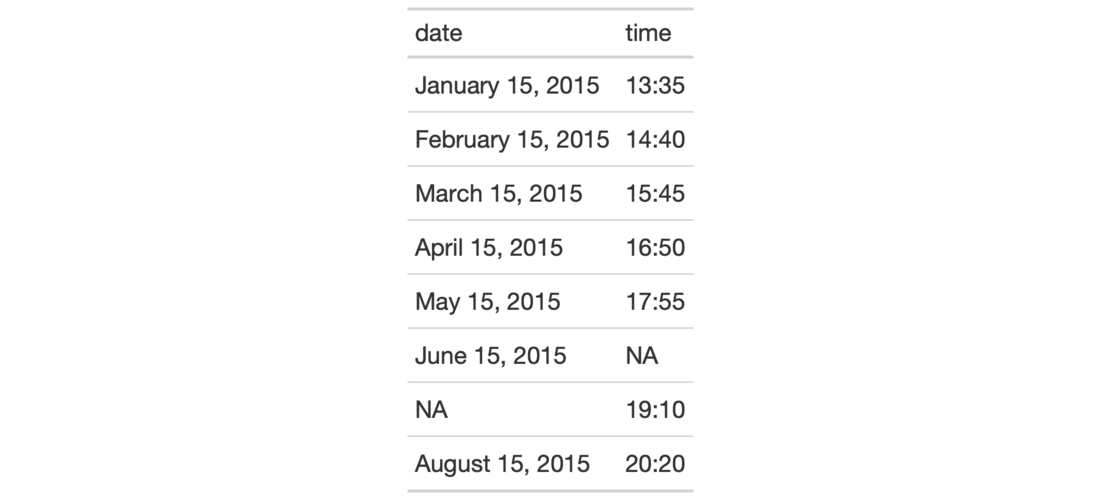Format input date values that are either of the Date type, or, are
character-based and expressed according to the ISO 8601 date format
(YYYY-MM-DD). Once the appropriate data cells are targeted with columns
(and, optionally, rows), we can simply apply a preset date style to format
the dates. The following date styles are available for simpler formatting of
ISO dates (all using the input date of 2000-02-29 in the example output
dates):
"iso":2000-02-29"wday_month_day_year":Tuesday, February 29, 2000"wd_m_day_year":Tue, Feb 29, 2000"wday_day_month_year":Tuesday 29 February 2000"month_day_year":February 29, 2000"m_day_year":Feb 29, 2000"day_m_year":29 Feb 2000"day_month_year":29 February 2000"day_month":29 February"year":2000"month":February"day":29"year.mn.day":2000/02/29"y.mn.day":00/02/29
We can use the info_date_style() function for a useful reference on all of
the possible inputs to date_style.
fmt_date(data, columns, rows = everything(), date_style = 2)
Arguments
| data | A table object that is created using the |
|---|---|
| columns | The columns to format. Can either be a series of column names
provided in |
| rows | Optional rows to format. Providing either |
| date_style | The date style to use. Supply a number (from |
Value
An object of class gt_tbl.
Details
Targeting of values is done through columns and additionally by rows (if
nothing is provided for rows then entire columns are selected). Conditional
formatting is possible by providing a conditional expression to the rows
argument. See the Arguments section for more information on this.
Figures


Function ID
3-8
See also
Other Format Data:
data_color(),
fmt_bytes(),
fmt_currency(),
fmt_datetime(),
fmt_engineering(),
fmt_integer(),
fmt_markdown(),
fmt_missing(),
fmt_number(),
fmt_passthrough(),
fmt_percent(),
fmt_scientific(),
fmt_time(),
fmt(),
text_transform()
Examples
# Use `exibble` to create a gt table; # keep only the `date` and `time` columns; # format the `date` column to have # dates formatted as `month_day_year` # (date style `5`) tab_1 <- exibble %>% dplyr::select(date, time) %>% gt() %>% fmt_date( columns = date, date_style = 5 ) # Use `exibble` to create a gt table; # keep only the `date` and `time` columns; # format the `date` column to have mixed # date formats (dates after April will # be different than the others) tab_2 <- exibble %>% dplyr::select(date, time) %>% gt() %>% fmt_date( columns = date, rows = as.Date(date) > as.Date("2015-04-01"), date_style = "m_day_year" ) %>% fmt_date( columns = date, rows = as.Date(date) <= as.Date("2015-04-01"), date_style = "day_m_year" )